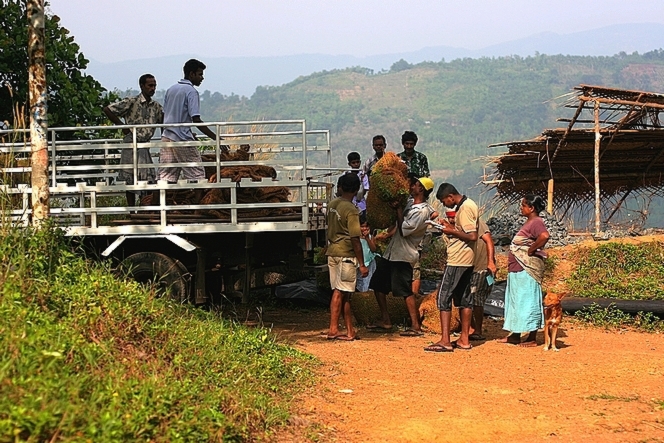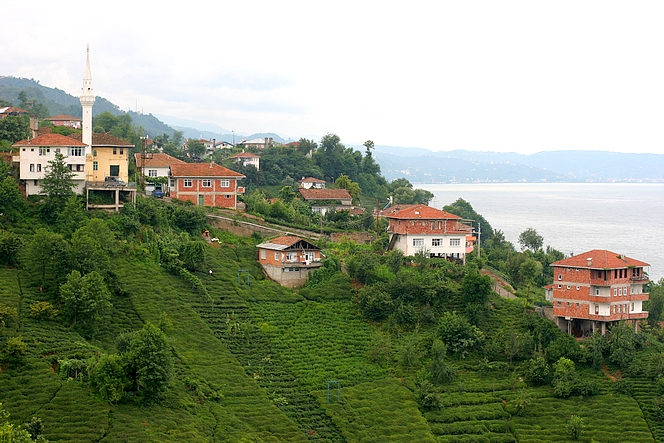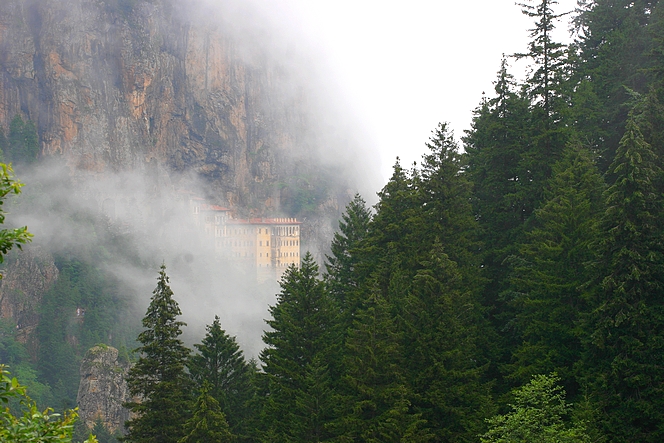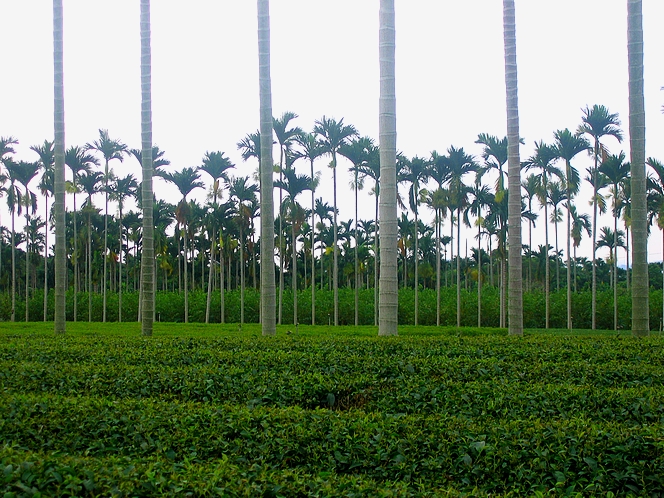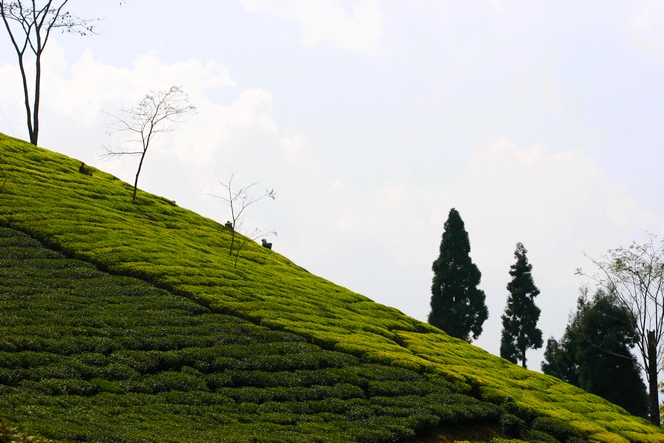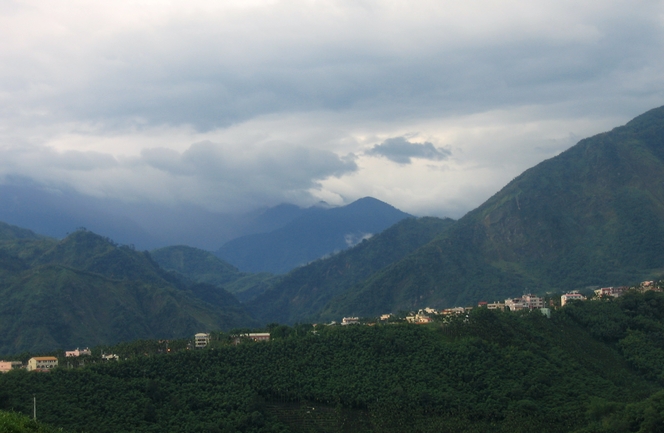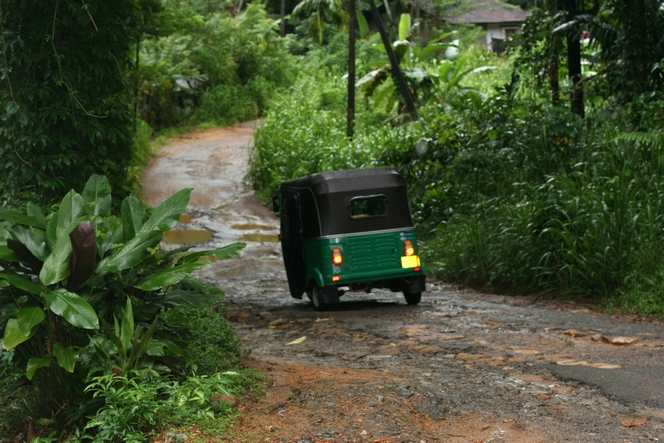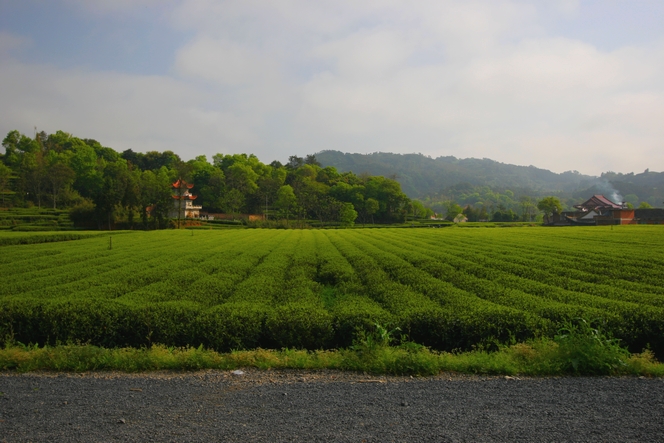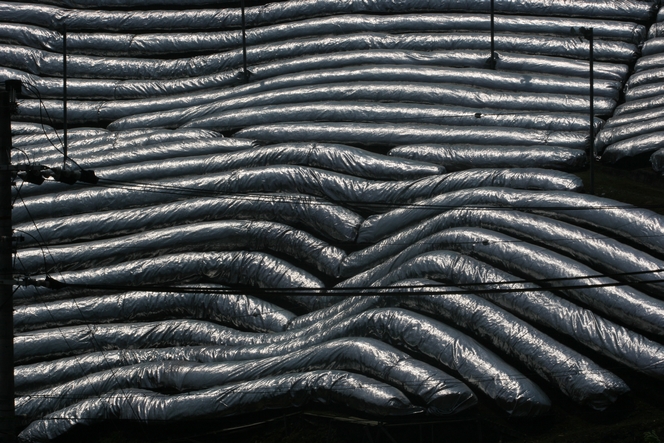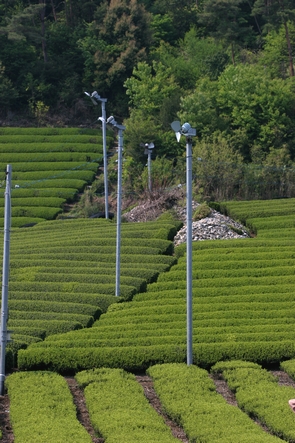In the south of Sri Lanka, tea is mostly grown by individual farmers who cultivate their own land. They sell the tea leaves just after the harvest, as they don’t have the infrastructure to process them. The farmers don’t have to go far to find buyers: their freshly plucked tea leaves are very much wanted by the local tea factories, who even go and collect the bags filled with fresh tea leaves themselves because of competition.
I spent hours going round the farms in one of these 4x4s fitted out with trays and it’s an incredible experience: we sometimes had to get the bags high in the mountains, skidding on the steep slopes, driving along vertiginous drops, crossing forests under cries of monkeys. We’d then suddenly end up on the top of a mountain in the middle of nowhere, around farmers breeding cattle and living out of different cultivations.
So we’d buy the tea leaves, chat a little, maybe drink a tea together. We’d talk. We’d laugh. And it’d then be time to go and collect more tea bags from other isolated farms.

